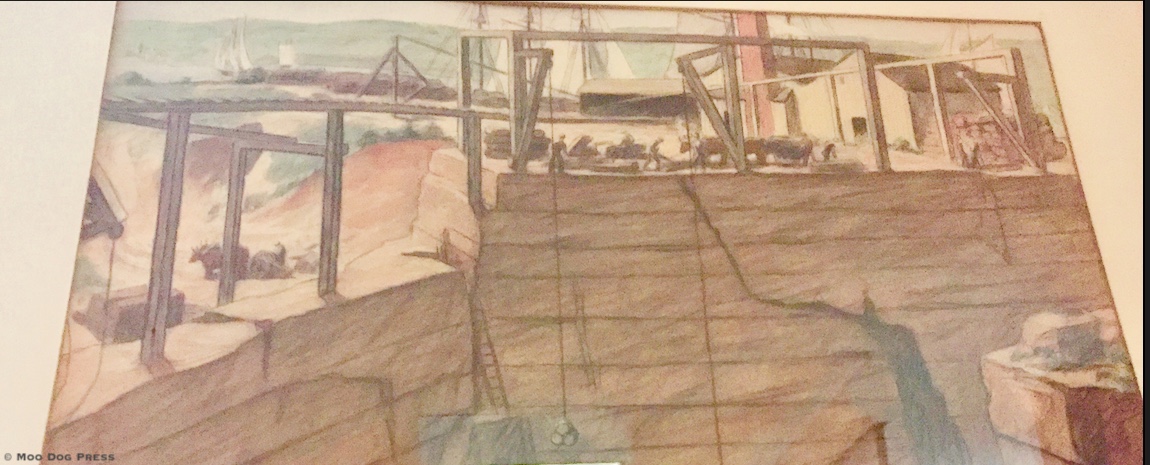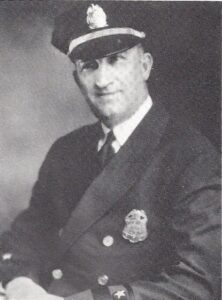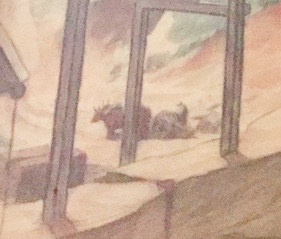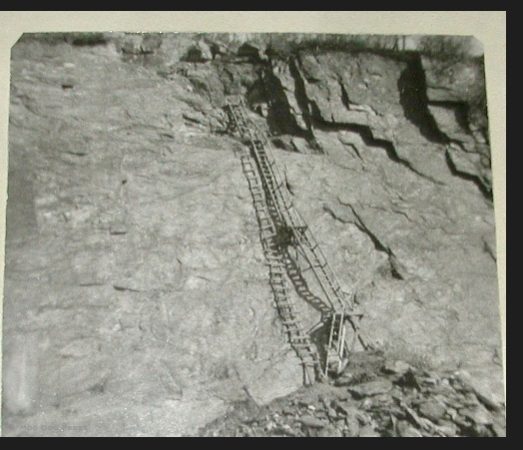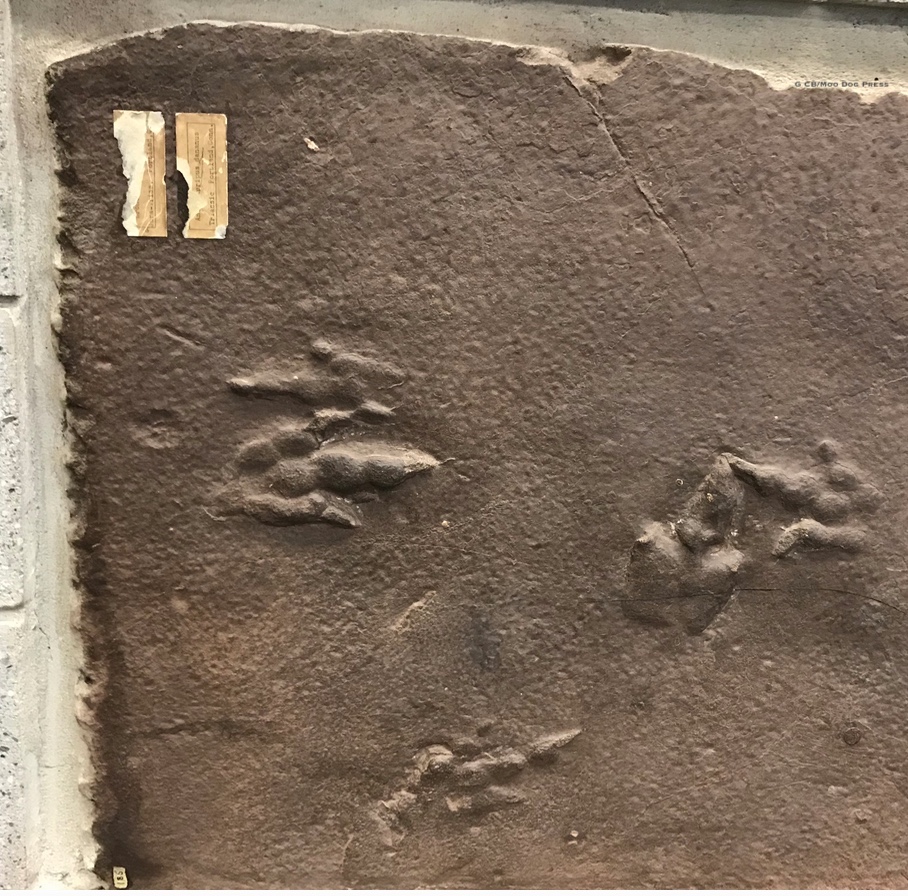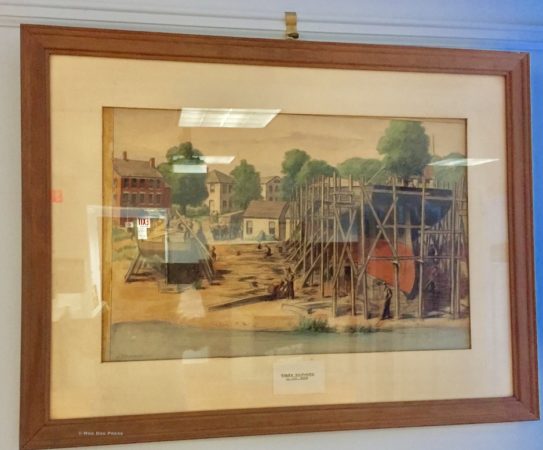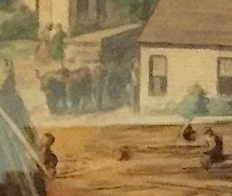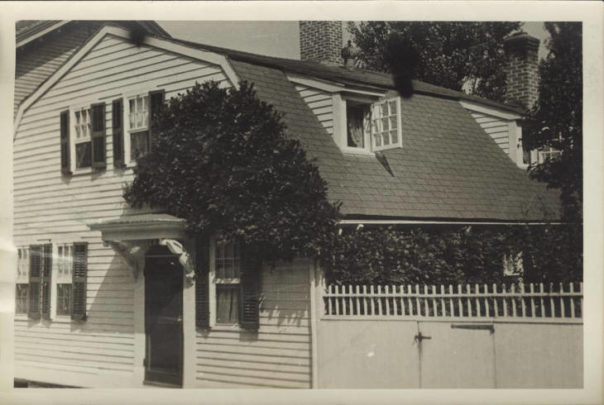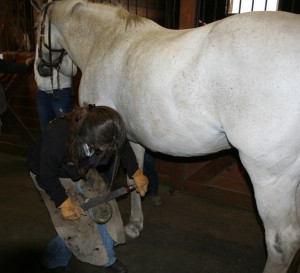Connections: ‘Michael Carroll (1816-1865) Worked at Portland Quarry’
Heat. Sun. Working hands, balance. To feed our families, work. Cold and wind. Navigating stone.
A conversation on Twitter and a life, remembered. Sacrifice, danger. Also thought of the person who gathered the information, typed it into being. Typeset, printed. New delivered. For a family, life-changing tragedy. His descendants honor him with remembering his life, sharing that aspect of a quarry, labor. Risks.
My Great-Great grandfather Michael Carroll (1816-1865) worked at the Portland quarry. He took a fall and was killed on the job in 1865.
— James Meehan (@JMArtDesign) July 21, 2022
Middletown’s newspaper, “The Constitution”—16 August 1865. pic.twitter.com/ZG0Ni5gRsR
— Mark Carroll (@EmceeMC17) July 21, 2022
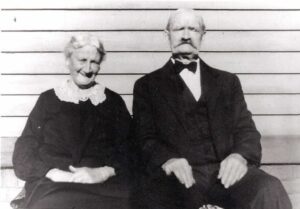
Thomas E. Carroll, son of Michael (the immigrant who died in quarry). And that’s not a big frown on his face, it’s his gray mustache! Courtesy of Mark Carroll.
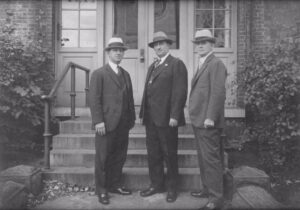
Thomas’s son, who he named after his father—Michael B. Carroll, Meriden Chief of Police. (Pictured in middle of this image). Courtesy of Mark Carroll.
In a lot of ways, his story is the classic immigrant story. Came over with nothing, was eventually able to save enough for a down payment on a house. Worked a backbreaking and dangerous job which led to his death. His son Thomas (my 2x great) started out working at the same quarry where his father had died—-Shaler and Hall Quarry. After a time, Thomas was able to leave the quarry and find employment at the Meriden Spoon Shop. A step up in some ways, but he worked 10 to 12 hrs a day up until the time of his death. But HIS children had better opportunities, and his son (my great-grandfather) named Michael was able to join the Meriden PD—-worked his way up the ranks until becoming Chief of Police from 1933-1960.
We all have our immigrant stories.
–Mark Carroll (@EmceeMC17 on Twitter)
How fortunate we are to be alive in 2022 in the ebb portion of an ongoing global pandemic (that virus is still around, working and trying news keys, new variations). Remembering a famine and immigration, the enormous risk to try and find a better life, to eat and stay alive. Family. My own paternal grandfather came from Poland, found work on a city garbage truck when the containers were picked up and contents thrown into a truck (not so long ago either). He fell, but lived. His wife, my paternal grandmother, suffered a stroke, he built her a chair with wheels. When she died, he had four young children to raise. Alone. He was successful at that, kept them together though he lost his farm. My maternal grandfather, a blacksmtih at Chalker & Fenn in Meriden. Connecticut. Maternal grandmother birthed 12 children; 11 lived, a testament to her. She died when my own mother was 16, the story told with tears of her unbearable grief and loss. And she went on, or I and my five siblings and the three grandchildren she helped raise would not be here.
An aunt remembering her mother and father giving the choice bits of meat to their children, eating the fatty parts if any. Pushing more on those plates to help their offspring grow. Food is taken for granted by many, but not all. Stories help us have gratitude, we are here because our ancestors refused to give up. Honor them with your choices today. And thank you to both those who share and Twitter, a platform that provokes thinking and connections when a curated feed unearths stories, hope, art, history and so much more. (And resulted in this story, a portion of which was published in 2019, About quarries and history found.)
Help me see and write stories that connect and matter. To bring them forward and send to the future.
With new innovations in technology constantly evolving, an overlay “ghosted imaging” for context may soon be possible. Reflecting back to a conversation decades ago with Richard Krueger, then director of Dinosaur State Park (1970-2003), during an interview for a Sunday daily newspaper feature – “one day I'd like to see a hologram of dinosaurs moving across the trackway and disappearing into the crowd of visitors.”
What's literally right in front of you, look. Listen. Record.
Time travel. Then and now. Travel to learn and see where events happened is a passion, along with reading and deep research to reconstruct a place, “see” into the past, bring that forward.
Content matched to place and time, stories with added layers and technologies all start in the imagination. Artifacts scanned in three dimensions make information available from portals that include smartphones, handheld computing devices with imaging capabilities. Still. Walks and explorations propelled by curiosity yield discoveries in unexpected places. Geology in Connecticut and rivers provide rich resources for long walks and observations. Kernels of ideas appear seemingly out of nowhere. To scan a meadow on a walk and see sedges is to know that area is likely marshy, that this species loves water, wet “feet” for its habitat. If a sycamore is close by, there's underground water or a stream. Walk, ride, hunt and over time, with experience knowledge is gained. Often by getting stuck — on horseback, with wheeled vehicles or on foot.
“In 1935 President Franklin D. Roosevelt established the Works Progress Administration (WPA) in order to put people back to work. For the first time in the nation’s history, the federal government hired hundreds of artists and paid them an hourly wage for art that was pleasing to the eye and that could inspire faith in democracy. In Connecticut, the headquarters of the State Federal Art Project was in New Haven.” — Connecticut State Library/Connecticut New Deal projects/Living New Deal
“During the 1930s in the United States, the Works Progress Administration developed the Federal Writers’ Project to support writers and artists while making a national effort to document the country’s shared history and culture. The American Guide series consists of individual guides to each of the states. Little-known authors — many of whom would later become celebrated literary figures—were commissioned to write these important books. John Steinbeck, Saul Bellow, Zora Neale Hurston, and Ralph Ellison are among the more than 6,000 writers, editors, historians, and researchers who documented this celebration of local histories.” — Trinity University Press
And the words and descriptions ferry information forward in time, waiting for the right person to discover, connect to a time and place once again.
A photograph.
From the digital collections of the Connecticut State Library: “The house was moved from Main Street and turned so that the end of the house faces the street. Reconditioned at the time it was moved. A small bracketed roof tops the main door. The present chimney is small. Roof pitch is quite low. Two small dormers have been added to the west side. Cornice, plain, with a fair overhang. Tell us more about the building, its history, its address, etc. mailto:diginfo@cslib.org Put the Title in the email Subject line, for example Stonington historic building 034. Creator: W.P.A. Federal Writers Project, State of Connecticut. Date – Created 1935-1942.”
“Digitized materials include survey forms and photos from the Census of Old Buildings in Connecticut. …the project took place from 1934 through 1937 under the Works Progress Administration (W.P.A.). The survey forms provide descriptions of nearly 5,000 buildings. Photographs were taken of most buildings and clipped to the survey forms. Some forms also include sketches of interior and/or exterior architectural details and a brief history of the building.”
Images seen recently include Essex shipyard and Portland stone quarries. Showstoppers – take the time to look at the incredible details captured by the artist. By the way, to research WPA projects (and connections to artists and authors work) in any state, start with online searches or in your local library.
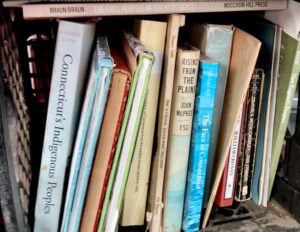
Sampling of his reading, crate of books kept on hand by Simon Donato of Woodbridge from a 2022 interview. Linked to a story about meeting him.
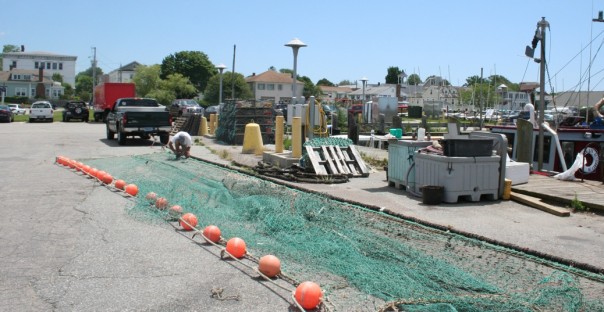
Working to dry, inspect and repair nets. Working waterfront; Stonington docks. Years ago, an interview with Captain Charles Fellows of the Charlotte Elizabeth; Fellows started work at age 12.
Some elements of a community are similar no matter where the location in the state, region or country. Each has its own flavor, a reflection of the choices made. Change is a constant in life and business. But what makes a place different will draw visitors time and again. (And then there are the post office murals – and found WPA art in libraries and schools, but that's another story.)
The daily life at the working waterfront on the town docks in Stonington. The tang of the salt air on the almost constant ocean breezes are a bonus. In pursuit of fresh scallops, a drive and walk. Found along the way, this: Raymond, Frank Jo (1907-1993) “Frank Raymond was born in Pittson, Pennsylvania in 1907. At an early age he moved to Bridgeport, Connecticut where he attended the local public schools. He also lived in Stonington, Connecticut with an uncle who was the keeper of the lighthouse at Latimer Reef. In his lifetime he worked a number of odd jobs including sword fishing, working in a brass foundry and a velvet factory, boxing and wrestling professionally, and playing the saxophone and clarinet in a local jazz orchestra. Raymond first became interested in art while he was the assistant keeper of the Latimer Reef lighthouse. He got the post at age 16 in 1923 and stayed in it for eleven years. It was there that he taught himself to paint using small pieces of tarpaulin. In the spring of 1936 he got a job as a farm hand on artist Rockwell Kent’s farm for three months. In exchange for his service, Kent gave him instruction in art and useful criticism. Raymond traveled to Europe and up and down the East Coast on very little money. During the winter of 1937 he was hired by the WPA Federal Arts Project to do a series of seascapes. He completed 98 easel works, some of which were allocated to Middlesex County Temporary Home, Fairfield State Hospital, Portland High School, Cedarcrest Sanatorium, Long Lane Farm, Laurel Heights Sanatorium, Board of Park Commissioners, Southbury Training School, Department of Public Works, Fairfield State Hospital, Central Jr. High School, Rocky Hill Soldiers’ Home, and Southbury Training School. Late in life he was storing thousands of water colors, oil pastels, and line drawings. He refused to sell his art because, as a friend told a newspaper interviewer, “he had apparently fallen in love with them and couldn’t bear to part with them.” Raymond died in Stonington in 1993.” — Connecticut State Library
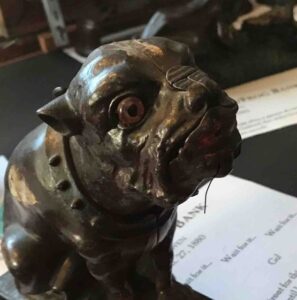
Foundries, mills, quarries, shops. Objects and images evoke stories of humanity. A mechanical dog bank made in Connecticut.
Bill Bomster, Stonington Seafood Harvesters interviewed by Emily Brooks (2011), author of Connecticut Farmer & Feast cookbook.
People who fish the sea, farm, operate a business, encourage farmers' markets for their own community, work hard. Put down that handheld screen and go. Stories wait in your community; listen and connect. More recent research and learning linked here. Editor's note: This story has been updated to include the family images provided by Mark Carroll; much appreciated.

